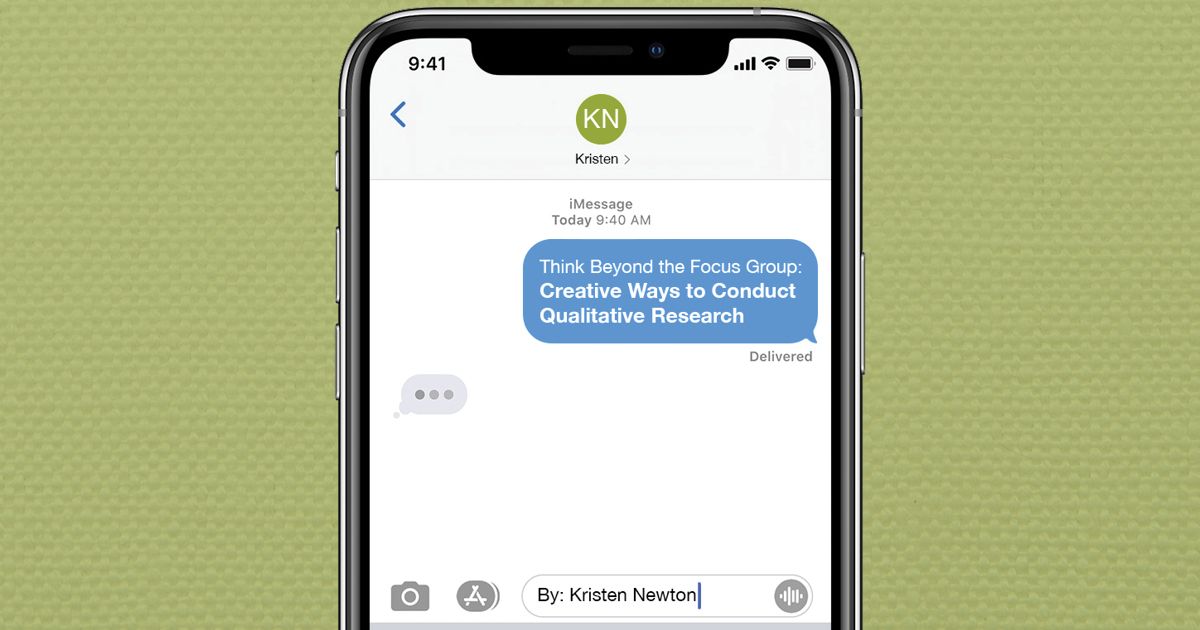As a researcher, questions are constantly swirling around in my head. I’m a naturally inquisitive person, so I consider my relentless wondering about things to be an occupational hazard.
Recently, I was interested to know how businesses in marketing, advertising, and adjacent industries are operating during the COVID-19 crisis: Are they busy as ever or have things slowed down? How are their clients coping with the crisis? How have they responded to the crisis to keep their employees safe but still engaged? Since it was driven by my own curiosity and not a formal client-requested research project, I didn’t have a lot of time to spend on it. I just wanted some quick insights.
I identified a few friends who work in the industry as well as some contacts in my LinkedIn network to create a list of 10 potential research participants. I reached out to each individually through text with a quick introduction about what I was trying to accomplish and three or four specific questions. I figured it was a low-stakes way try to collect some data that allowed the participants to get back to me when they had time. Then I turned my attention back to other work projects, thinking I probably wouldn’t hear from anyone right away—if at all.
I was honestly blown away by what happened next. Within 15 minutes of sending out my texts, I got six thoughtful, detailed responses. A 60% response rate to a qualitative research request through text? Maybe this approach has legs after all, I thought.
While the responses I got were very interesting (perhaps I’ll share them in a future blog post), what really surprised me was how well this research methodology worked. It made me reflect on some of the more creative qualitative research methods LMD has used to collect data—such as intercept interviews, walk-up creative testing, and Facebook polls. Many had participation rates that were comparable to traditional approaches, like focus groups and in-depth interviews, and the quality of the information was just as good.
So when it comes to designing your next qualitative research project, I invite you to think beyond the focus group (or in-depth interview). Ask yourself these questions and let the answers guide your approach:
- WHEN do you need the data? If you need information fast, nontraditional research methods are the way to go. The impromptu nature of these methods allows you to deploy research—and get responses—on a quick turnaround.
- WHAT do you need to know? Nontraditional research methods require you to narrow down your questions to what you absolutely need to know. It’s truly “research on the fly”—you don’t have the luxury of 30 minutes for an in-depth phone interview or a couple hours for a focus group to ask everything that’s in your discussion guide. Limit your research to a few (maximum of five is a good rule of thumb) specific, need-to-know questions.
- WHO do you need to talk to? I had a ready-made convenience sample in my personal and professional network that made it easy to conduct my research via text. If the people you want to talk to aren’t in your immediate network, widen your circle. Ask your family, friends, and co-workers if they know anyone who’d be willing to answer some of your questions.
- HOW are you going to execute? Taking your timeline, research objectives, and prospective participants into consideration, determine the best instrument for your research. Again, think creatively: it could be text messaging, “man-on-the-street” interviews, or even asking for responses to a compelling question in a social media post.
Like all research methodologies, nontraditional approaches do have limitations, such as sample size, number of questions, and ability to ask follow-probes. And of course, focus groups and in-depth interviews still have a place in your research toolkit. But if you are innovative and agile—and believe like we do that “some data is better than no data at all”—nontraditional research can provide you with some eye-opening insights.
Need help with your next research project? Contact us.

